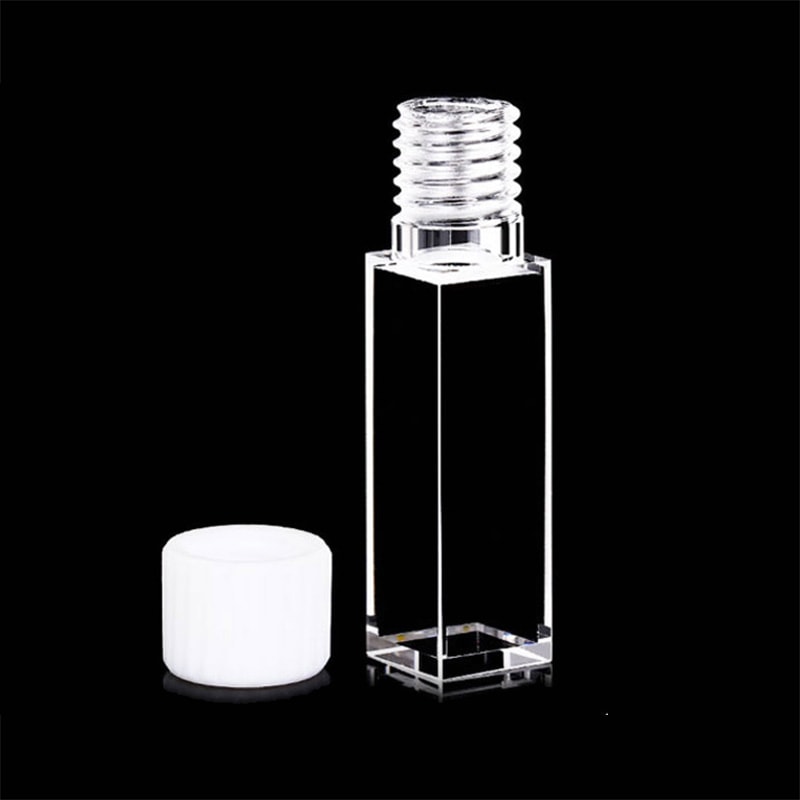Spectrophotometry is an essential element of scientific discovery it is a method to unravel the secrets of light absorption and transmittance in specific wavelengths. Cuvettes are the core of spectrophotometry, a simple yet crucial vessel used to hold samples for analysis. These small containers might seem simple, but their design intricacies, from cuvette path length to material choice, hold the key to unlocking accurate data on substance concentration and purity. Let’s dive into this fascinating universe where cuvette size and dimensions shape the outcome of every test.

Image credit: cuvet.co
The Power of Cuvette Path Length
Imagine a beam of light passing through an object. The outcome is determined by how long the path of the cuvette. This is the length light travels in the liquid. For many labs, a cylinder of 1 centimeter length is best because it strikes an equilibrium between sensitivity as practicality. Why does this matter? The longer the path of light, the greater the amount of light that is taken in. This means that the signal will be amplified when using dilute samples. A shorter path could make significant difference when using highly concentrated solutions, such as proteins or nucleic acids. This reduces the quantity of dilution required which saves precious samples as well as decreasing the preparation time. What’s the key takeaway from this? Matching the the path length to sample requirements is not obvious and increases reliability.
Cuvette Dimensions: A Look at More than What meets the eye
It’s not just about the volume of liquid that can fit inside the vessel. It’s equally about how the vessel works with the spectrophotometer. Cuvettes are available in a range of sizes and shapes and are each designed to meet specific requirements. Semi-micro cuvettes, for example, with their smaller dimensions and thicker wall thicknesses, are made to handle small volumes of samples. Think of a tiny amount of nanoliters or perhaps a rare biological extraction. Thicker walls lessen the interior space, which allows light to flow through a condensed sample without wasting the drop. Compare this to a standard cuvette, and it’s a stark contrast with fewer steps for pipetting, less room for error, and results that hold against scrutiny. This is a clever tweak that demonstrates size isn’t just an numerical number, but also a strategic factor.
The 1cm Length of the Path Cube: A Lab Favorite
Why is a cuvette with a 1 cm path length being used in a lot of research? This is the best place to conduct biological tests, where every milliliter is important. This classic design gives constant absorbance measurements, without overpowering the detector. This isn’t the model that is universally applicable. It’s not a single-size hero. Choosing the right instrument is essential, not only using the one you are comfortable with. A wrongly matched cuvette could be compared to a poorly tuned instrument.
Materials Matters: More Than Size and Path
Cuvette dimensions only tell half the story. The choice of material is the final word. High transmission rates of quartz and glass cuvettes allow light to move through them without interference. They are durable and reusable. This makes them perfect for spectroscopy. On the other hand plastic cuvettes can be found in a variety of sizes, offering affordability and convenience. You can use them and then throw them away. There’s no need to wash, no risk of cross-contamination. They’re great for quick DNA or testing RNA and also for aqueous solutions. What’s the downside? The trade-off? Quartz is the preferred choice for purists while pragmatics could prefer plastic.
Perfect Practice and Precision
The beauty of cuvettes lies in their versatility. With spacers, narrow paths can be used to manage concentrated samples. The larger vessels are better suitable for bigger volumes. Every choice path length, size and material will ripple through the lab, shaping the clarity of the results. Consider a lab that is analysing a protein. A semimicro cuvette has shorter paths, which eliminates the need for dilution and delivers reliable data faster. When you compare this to an ill-advised cuvette swap mid-experiment and the results are distorted It’s no wonder. This is a reminder that even the smallest details can have a big impact on the spectrophotometry.
Cuvettes may seem small, yet their importance is immense. From the 1cm length cuvette up to custom dimensions, these vessels bridge the gap between sample and understanding. If you’re seeking pureness or concentration using the correct cuvette, you can turn the best measurement into an outstanding evidence that precision in science is based on the instruments at the ready.